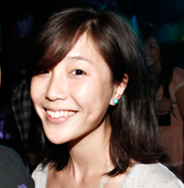Healthcare services overseas are attracting increasing numbers of Chinese customers who are willing to pay top dollar for quality and privacy, according to industry insiders.
The trend, however, is different in China than in the United States.
Chinese customers who seek medical services abroad tend to be very wealthy and demand quality service and care, Renee Marie Stephano, president of the US-based Medical Tourism Association, said.
As China's healthcare is among the cheapest in the world, medical tourists from China generally value quality and privacy most, she said.
"China's booming economy has churned out huge numbers of wealthy people who can help further drive the business," she said.
The most popular destinations for Chinese medical tourists are countries and regions like Japan, South Korea, Singapore, the US and Hong Kong, all of them prime destinations in their own right, said Xu Shuo, secretary-general of the Beijing Medical Doctor Association.
Nearly 60,000 Chinese people go abroad annually for healthcare services, especially for anti-aging therapy, cancer screening, to give birth and to get treatment for chronic diseases, said Yang Jian, CEO of the Shanghai Medical Tourism Products and Promotion Platform.
Recognizing the market potential, a number of practitioners abroad are moving to attract more patients from the mainland.
Hu Bo, chairman of the Ciming Checkup Group, told China Daily that more than 1,000 customers, mainly from Beijing, Shanghai and Guangzhou, went abroad annually for healthcare through their organization. The figure was just over 100 in 2008.
"And demand keeps rising particularly among the wealthy and those who value privacy," he said.
Ciming has developed more than 50 medical institutions in countries and regions like Japan,Switzerland, Singapore, the US, South Korea, Taiwan and Hong Kong, as partners for medical tourism.
The most popular procedures include sheep placenta anti-aging therapy, high-end medical checkups, chronic disease care and treatment, according to Hu. More and more expectant mothers are availing of their services.
Language barriers and a lack of private insurance programs remain major obstacles for Chinese to go abroad for purely medical procedures, like surgery, he said.
Cost can also be a concern, he said.
Realizing the huge market potential, some like South Korea and the US have set up special Chinese-speaking medical units to receive Chinese patients exclusively, he said.
Questions:
1. Approximately how many Chinese travel abroad for healthcare services annually?
2. What has helped “churn out huge numbers of wealthy people who can help further drive the business”?
3. What are the most popular procedures paid for?
Answers:
1. 60,000.
2. Chinese booming economy.
3. Sheep placenta anti-aging therapy, high-end medical checkups, chronic disease care and treatment.
(中国日报网英语点津 Helen 编辑)

About the broadcaster:

Emily Cheng is an editor at China Daily. She was born in Sydney, Australia and graduated from the University of Sydney with a degree in Media, English Literature and Politics. She has worked in the media industry since starting university and this is the third time she has settled abroad - she interned with a magazine in Hong Kong 2007 and studied at the University of Leeds in 2009.